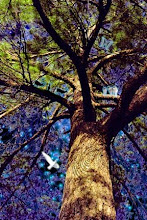Connuche (Kenuche)
A Recognized Dish of Honor
Contributed by Youngdeer
Always save back some balls for your family at Thanksgiving, Christmas, New Years with what ever other special dishes you fix. This is a side dish that reminds you where you came from and your ancestors can smell the connuche and find your table.
Even those who haven't tasted it before down deep inside remember it and are happy. Most families have one or two prime gatherers. Several women from my town buy their family Christmas presents from making Connuche balls and selling them to everyone else who still is Cherokee but work in offices and don't get to the woods like they should. You can freeze them. My granddaughters come back to Indian Territory in the fall to see the family but pick the fall to get a seasons supply of Connuche balls. I buy them cause, I don't bend over so good any more and it gives women with kids in the country a honorable, traditional way to earn extra money.
Beat up so-hi (hickory nuts) very fine until it can be formed into balls. Balls are big like softballs. This is meat and shell both. Take how much Connuche you want from ball. Each ball can feed enough for about 20. Place in a sauce pan and cover with boiling water. Stir well separating the shells from the "goodies". Strain through a cloth or fine sieve.
Now don't let your city ways scare you from this. The shells will sink to the bottom and the meat has mainly cooked up into a base broth. You can see an oil come to the surface from the boiled nuts. If you pour it careful just use a pasta strainer. Now I add rice and cook it. Add hominy, homemade or from a can. Mash about half into the the soup mixture. Some mash the hominy, others like it whole golden kernels. From here, you are on your own. Tradition stops there in some families.
My family somewhere back there got use to adding sliced mushrooms from the store. Season with lots of salt. Or leave out the mushrooms and add sugar instead. I have added little pieces of deer meat. Fix it the way your family likes it. If the base was Connuche everyone knew it was a special meal. They were honored.
My grandfather would take a hand full of raw Connuche from the icebox and put it in his coffee pot before making the coffee. Teach the family to say "con-nu-che a-gwa-du-li" (I want Connuche) and it is always good if you serve it with se-lu-ga-du. (Cornbread)
From the web site of the Cherokees of Californina






